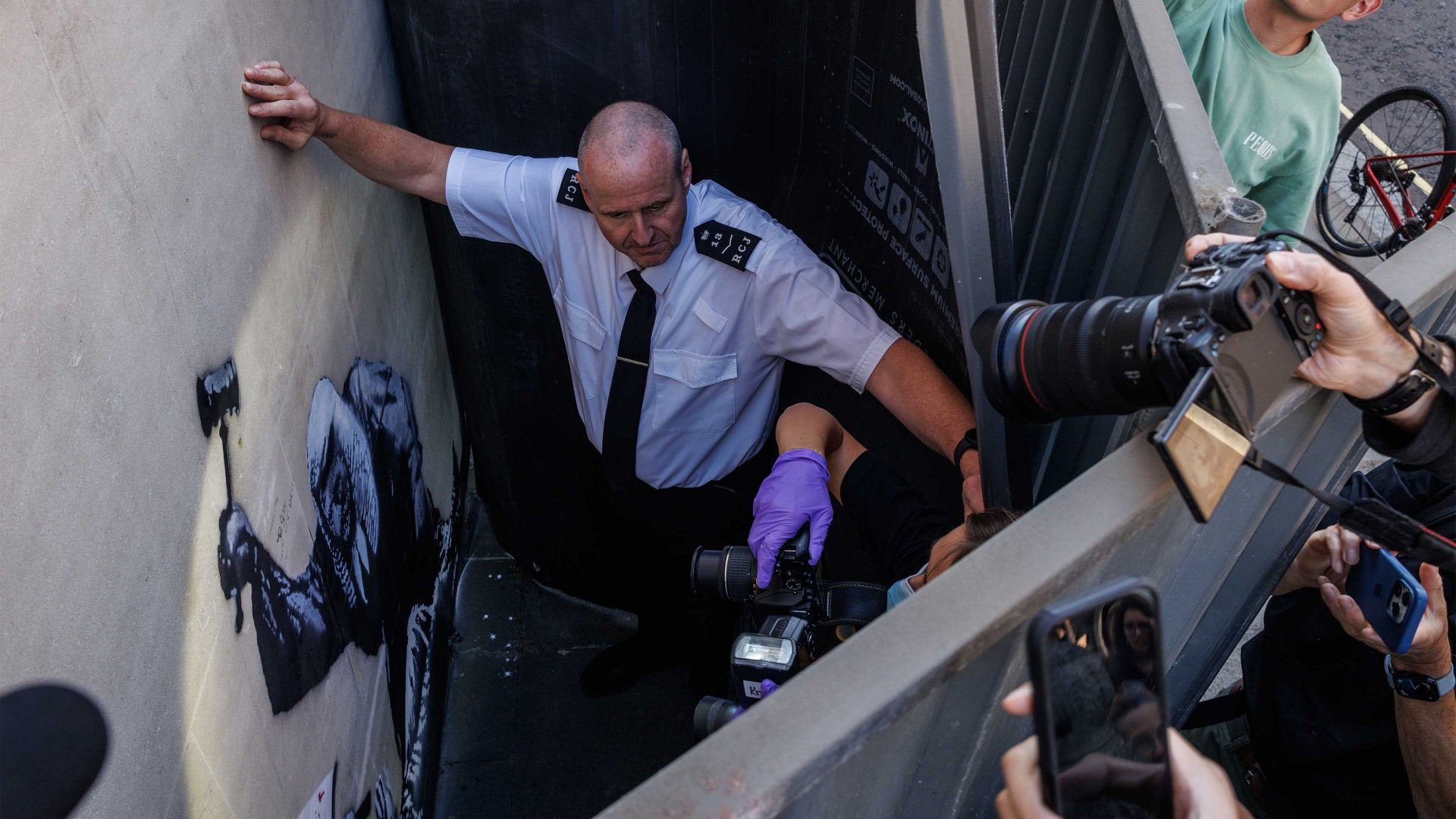There are few more obvious acts of censorship than destroying a work of art in public. This happened to Banksy’s image of a protester holding a placard being forced to the ground by a judge wielding a gavel as a weapon, painted on the outside wall of the Royal Court of Justice in London. Or so it seemed.
Banksy is much loved, and many of us feel the government’s attitude to pro-Palestinian anti-Israeli peaceful protests has been heavy-handed. The irony of censoring his protest against censorship was not lost.
That this act of erasure by a man with a scrubbing brush took place behind a hastily erected metal screen did not prevent it from being documented and shared on social media.
Assuming scrubbing-brush man wasn’t Banksy himself, though, he inadvertently produced a new work of protest art. The silhouette of the image has seeped into the stone of the court buildings and is at least as powerful as the original image. This could well have been Banksy’s intention – the act of image destruction tattooing it into the wall.
Someone who hid a shredder within the frame of one of his Girl With a Balloon pictures and then remotely activated it just after it was sold for over £1m at Sotheby’s could easily devise a painting that transfers more permanently to the wall when “scrubbed off”.
There’s an interesting question of whether you can truly destroy a Banksy painting. One way of looking at the work in question is to see it as just one token of a type rather than as a unique object that once physically destroyed ceases to exist.
All accurate copies of Charles Dickens’s book Great Expectations are tokens of one type. Pictures are a bit different in that they are either treated as unique destructible objects, or as types, but types that require certification by their creators to make them authentic.
Traditionally an oil painting is a unique, one-off object that has its own aura. Think of the Mona Lisa. In 1911, an Italian handyman, Vincenzo Peruggia, walked into the Louvre in Paris and stole Leonardo’s masterpiece, allegedly because he was an Italian nationalist who thought it should be elsewhere.
One not implausible story, though, is that this was cover for a clever sting in which a criminal gang sold the Mona Lisa to a whole series of rich American collectors – except the paintings they received were just good forgeries. The buyers could never go to the police about this because they had knowingly received what they believed were stolen goods.
Suggested Reading


Do cannibals go to heaven?
The aura of the true, authentic, missing painting (the object stored in a box under Peruggia’s bed until it was recovered in 1913) was so strong that many visitors came to look at the space in the Louvre where the painting had hung.
Banksy’s recent painting will also inspire pilgrimages, whether or not the authorities manage to remove the painting’s ghost image. But many of Banksy’s works are intrinsically reproducible because they are made using stencils.
I don’t know if this one was. If it was, it would be very simple to create many more Banksy images indistinguishable from this one, all of which could be certified genuine by Pest Control, the site the artist has set up for this purpose and which issues certificates of authentication. Any new instantiation of this image authenticated by Pest Control would then be just as “original” as the one they tried to erase.
These would all be tokens of the same type, just as certified prints of a particular image by an art photographer would be. But they don’t even need to be made from stencils. There are plenty of digital images that would allow Banksy to make numerous indistinguishable further examples of this type, all of which he could authenticate if he wanted to.
You might think that once he’s created the type, it shouldn’t really matter whether or not he authenticates further instantiations of the image as long as they accurately reproduce it. But that would be a mistake. Passing as a Banksy isn’t enough. Images get their meaning partly from how they are used. Artists are meaning-makers, and if Banksy were to relinquish control of authenticating his output, he would lose the ability to communicate with us, since his meaning would be lost in a confusing torrent of Banksy-like messages.
As it is, his meaning is clear. And it leaves an indelible trace in our memories that will last long after the authorities have removed any paint from the wall.




